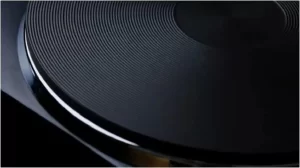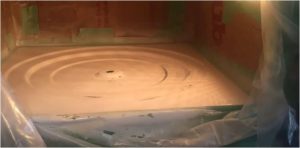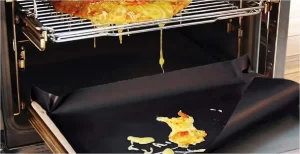Can You Put Hot Plates on Granite?
Yes, you can put hot plates on granite. Granite countertops are heat-resistant and can handle hot pans and dishes.
Granite countertops are known for their durability and heat resistance, making them an ideal choice for kitchens. One of the key benefits of granite is its ability to withstand high temperatures, allowing you to place hot pans and dishes directly on the surface without causing damage. This feature makes granite countertops a popular choice among homeowners and professional chefs alike.
In comparison to other countertop materials, such as quartz, granite offers superior heat resistance. While both granite and quartz are strong and durable, granite’s natural composition gives it an edge when it comes to handling hot pots and pans.
This makes granite a more suitable option for those who frequently cook and require a heat-resistant surface.
Granite worktops are not only heat-resistant but also resistant to scratches and stains. This means that you can confidently use your granite countertops for various kitchen tasks without worrying about damaging the surface.
Whether you’re setting hot pots on granite countertops or placing hot dishes on granite, you can trust that your countertop will remain unharmed.
If interested: How to Clean Hot Plate?
Hot Plates and Granite
Granite is a durable and heat-resistant natural stone commonly used for countertops and other surfaces in kitchens. When it comes to placing hot plates directly on the granite, it is generally safe to do so. Granite has excellent heat resistance properties, making it capable of withstanding high temperatures without being damaged or affected.
One of the key reasons why granite can handle hot plates is its low thermal conductivity. This means that it doesn’t transfer heat quickly, allowing it to stay relatively cool even when exposed to hot objects.
However, it is still advisable to use caution and take some precautions to protect your granite surface.
To prevent any potential damage or discoloration, it is recommended to use trivets, hot pads, or heat-resistant mats under hot plates. These accessories act as a barrier between the hot cookware and the granite surface, reducing direct contact and minimizing the risk of heat transfer.
By using these protective measures, you can avoid any potential thermal shock or thermal expansion that could cause cracks or other damage to the granite.
It’s worth noting that extreme temperature changes should be avoided, as they can pose a risk to any material, including granite.
Placing extremely hot objects directly on a cold granite surface or vice versa can create stress on the stone, potentially leading to cracks or fractures. Therefore, it’s advisable to allow hot plates to cool slightly or use additional protection when placing them on a cold granite countertop.
Best Practices For Placing Hot Plates On Granite
Granite countertops are a popular choice for kitchens due to their durability and heat resistance. Follow best practices when placing hot plates on granite to avoid any damage to the surface.
1. Use trivets or hot pads: While granite can handle high temperatures, it’s still a good idea to use trivets or hot pads to protect the surface from direct contact with hot plates. This will also help prevent any scratches or marks on the surface.
2. Avoid placing hot plates on seams: Granite countertops are made up of multiple slabs that are joined together at seams. It’s best to avoid placing hot plates directly on these seams as they may be weaker than the rest of the surface and could crack under heat.
3. Allow the surface to cool: If you’ve been cooking for a while and the granite surface is already warm, it’s best to let it cool down before placing any hot plates on it. This will prevent any sudden changes in temperature that could cause the surface to crack.
Alternative Solutions For Placing Hot Plates
If you don’t have trivets or hot pads on hand, there are alternative solutions for placing hot plates on granite countertops. Here are some options:
1. Use a towel: You can place a clean towel or cloth on the granite surface and then place the hot plate on top of it. This will provide a barrier between the hot plate and the granite surface, protecting it from direct contact.
2. Use a cutting board: A cutting board can also be used as a makeshift trivet. Place the cutting board on the granite surface and then place the hot plate on top of it. This will provide a flat and stable surface for the hot plate.
3. Use silicone mats: Silicone mats are heat-resistant and can be used as trivets or hot pads. Place the silicone mat on the granite surface and then place the hot plate on top of it. This will provide a non-slip surface for the hot plate.

Can You Put Hot Pots On Quartz Countertop?
Quartz countertops are also a popular choice for kitchens due to their durability and low maintenance. Know whether you can place hot pots on quartz countertops without causing any damage. The answer is yes, you can place hot pots on quartz countertops.
Quartz countertops are made of a combination of natural quartz and resin, which makes them heat-resistant. They can handle temperatures up to 150 degrees Celsius without any damage.
It’s still a good idea to use trivets or hot pads to protect the surface from direct contact with hot pots. This will also help prevent any scratches or marks on the surface.
What Not To Use To Clean Granite Countertops?
Granite countertops are easy to clean and maintain, but it’s important to know what not to use when cleaning them. Here are some things to avoid:
1. Abrasive cleaners: Avoid using abrasive cleaners or scrubbers on granite countertops as they can scratch the surface. This includes products like steel wool, scouring pads, and abrasive powders.
2. Acidic cleaners: Acidic cleaners like vinegar, lemon juice, and bleach can also damage granite countertops. They can etch the surface and cause it to lose its shine. Instead, use a pH-neutral cleaner specifically designed for granite.
3. Harsh chemicals: Harsh chemicals like ammonia and hydrogen peroxide can also damage granite countertops. They can strip the surface of its protective sealant and cause it to become dull. Stick to gentle cleaners and avoid anything too harsh.
FAQs
Can hot plates damage granite?
Hot plates can cause damage to granite if they are placed directly on the surface without any protection. It’s best to use trivets or hot pads to protect the surface from direct contact with hot plates.
What temperature can granite withstand?
Granite is a heat-resistant material that can withstand temperatures up to 1200 degrees Fahrenheit. Sudden changes in temperature can cause it to crack or chip.
Can granite crack from hot plates?
While granite is a durable and heat-resistant material, it can still crack from sudden changes in temperature. It’s best to avoid placing hot plates directly on seams or edges of the granite surface, as these areas may be weaker and more prone to cracking.
What is the best way to clean granite after using hot plates?
After using hot plates on granite, it’s best to let the surface cool down before cleaning it. Use a pH-neutral cleaner specifically designed for granite and avoid using abrasive cleaners or scrubbers that can scratch the surface.
Can granite be repaired if it’s damaged by hot plates?
If granite is damaged by hot plates, it may be possible to repair it depending on the extent of the damage. It’s best to consult with a professional to determine the best course of action for repairing the damage.
Can granite be stained by hot plates?
Granite is a non-porous material that is resistant to stains. If a hot plate is left on the surface for an extended period of time, it may cause discoloration. It’s best to use trivets or hot pads to prevent this from happening.
What are some alternative solutions for placing hot plates on granite?
If you don’t have trivets or hot pads on hand, you can use a clean towel or cloth, a cutting board, or silicone mats as alternative solutions for placing hot plates on granite. These options provide a barrier between the hot plate and the granite surface, protecting it from direct contact.





